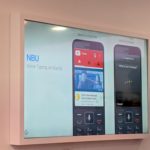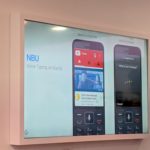KaiOS, now with 85M feature phones shipped, doubles down with Google, carrier deals and more
As the rate of smartphone sales continues to slow down and decline, a software startup called KaiOS — which launched in 2017 from the ashes of Mozilla’s failed Firefox OS mobile project as a provider of an internet-based feature phone OS, feature phone apps, and corresponding HTML5 app store that all work over advanced mobile data networks — is betting that there is still a big, lucrative market for cheaper, lower-end feature phones, and it’s announcing a slew of news this week on the road to leading it.
With 85 million phones now shipped in more than 100 markets with handset brands like Nokia and India’s Jio, KaiOS now has an expanded partnership to put more Google services natively into KaiOS phones, specifically deeper integration with Google Assistant and Google Maps, and the debut of a YouTube app — one of the most popular apps of all on smartphones — for KaiOS. For context, KaiOS (based in San Diego but with the majority of its R&D in Taiwan) raised $22 million from Google last year and had already worked to put basic Assistant and Maps functionality on its phones.
(We also understand KaiOS is on the cusp of another big round.)
Alongside this, KaiOS is launching several new handsets with feature phone handset makers; deals for KaiOS-powered phones with developing market carriers Ooredoo and Orange; and the launch of several new services: its first advertising SDK, KaiAds; and Life, a suite of services for first-time mobile service users to help them figure out how to use their phones and provide content and functionality around things like mobile banking and access to health, education and other services.
Ooredoo is active in North Africa, the Middle East and Asia, and it will roll out phones first in its home market of Qatar. While Orange is the incumbent carrier in France, its efforts with KaiOS will be focused first on its footprint in Africa.
While the main mobile story in the last 10 years has been about the ineluctable rise of smartphones boosted by Apple’s iOS, Google’s Android, and a huge range of handset makers using the latter to push the boundaries ever more on what it means to have a portable computer in your pocket, KaiOS Sebastien Codeville says that this does not tell the whole story.
In developing markets, it’s about offering something less expensive than smartphones but loading them with all the features that a smartphone affords, a crucial way of bridging the digital divide in places where a phone will be a person’s only way to access the internet.
“Yes, smartphones are quite affordable as the least expensive models are now priced at around $35, but KaiOS is $15-20. It’s still half the price of a smartphone,” he said in an interview. “There are 2G feature phones priced at $7-8 dollars, but they don’t have access to most mobile services. KaiOS is something in between.” It also helps that KaiOS is easy on battery life, with a handset typically able to last five days on one charge.
In more mature markets, it’s about picking off specific categories of users who have not been well addressed by smartphone makers. “Seniors are looking for phones with keyboards because of dexterity issues. The use of a touch panel is not easy for them,” he said. “And manual workers might be looking for more rugged products, and others may just want companion phones that can help them mostly disconnect on the weekend, or can be used for sports. Smartphones are not good solutions for these, either.”
This, in fact, is why a company like Google, whose Android operating system has helped to usher in the existence of the sub-$50 smartphone, is working with KaiOS. “We are a distribution platform to customers that they cannot access,” said Codeville.
While Assistant and Maps have been on KaiOS phones before now, the deeper integration will mean a couple of different things. First, KaiOS phone users in more local markets, specifically India, Indonesia, Mexico and Brazil, will now be getting the services. And second, those who are using features like Maps or Assistant will now also be able to enter requests using their voice — a key component not just because you may be using these when you’re on the move, but because text entry into keyboard phones can be fiddly.
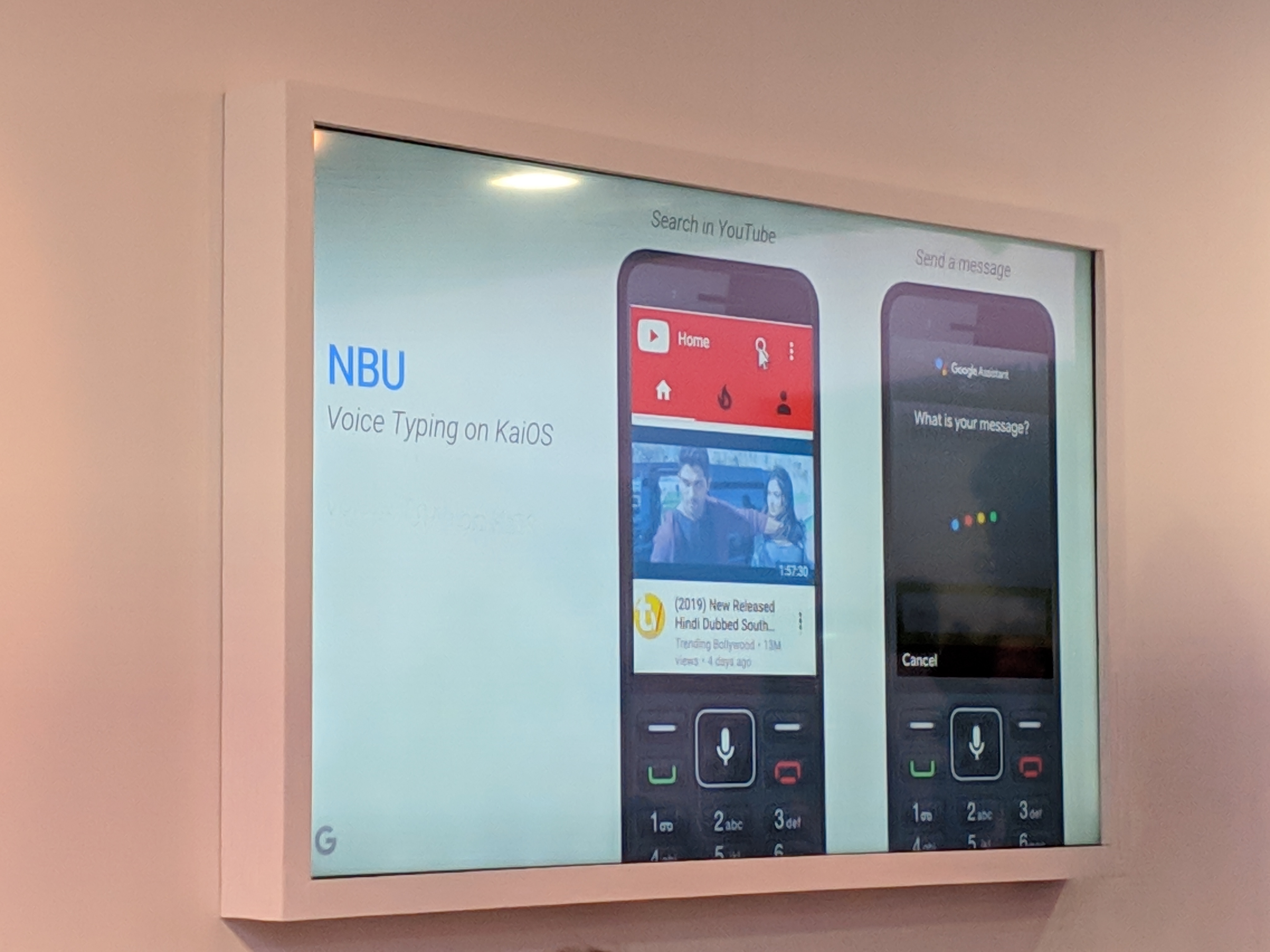
“If you look at the emerging markets, we’ve seen that the number of Assistant users has multiplied by seven,” Google’s Behshad Behzadi said earlier today as part of a bigger announcement to expand Google’s language and device support on mobile. “The main reason for this is that for the new users which are coming to this technology for the first time, voice is really the easiest and most natural way for them to use their phones. It’s removing a technology barrier for these users.”
Despite their close working and investment relationship, Codeville also admits that Android is also KaiOS’s biggest competitor, too, since it is the OS that powers the devices that are most likely to rival feature phones in terms of price and functionality.
Android may be a rival, but it’s also a template of sorts for KaiOS. Up to now, the feature phone startup has made small revenues from licensing, said Codeville, but the business model for KaiOS is mostly focused around revenues from its app store, and soon from what it hopes will be a lot of advertising around content and apps that people use through the KaiOS browser, in the form of KaiAds.
Available to developers in the form of an SDK, this is a supply-side platform that will tailor ads to work specifically on KaiOS and other feature phones, a segment that hasn’t really been addressed that well up to now because so many feature phones have smaller screens compared to smartphones, and have not really been designed to work with internet-based services. One of the key features of KaiAds, the company says, is that it renders ads in 200 milliseconds or less.
If advertising is KaiOS’s stick, then its suite of ‘how-to’ content and services, Life, will be the carrot, so to speak. Codeville would not go so far as to say that this is the company’s effort at corporate social responsibility — “We’re just a startup,” he protested — but he did confirm that the service does serve a dual purpose. It’s not just an effort to get people more acquainted with using the services, but in doing so, it will help grease the wheels of KaiOS’s business model.
“If we want to be sustainable and have a long term life of our own, we have to develop the monetization,” he said. Life, he added, will be very localised and will roll out country by country, likely starting with regions in Africa.
Powered by WPeMatico
Google will bring its Assistant to Android Messages
It’s only been a few weeks since Google brought the Assistant to Google Maps to help you reply to messages, play music and more. This feature first launched in English and will soon start rolling out to all Assistant phone languages. In addition, Google also today announced that the Assistant will come to Android Messages, the standard text messaging app on Google’s mobile operating system, in the coming months.
If you remember Allo, Google’s last failed messaging app, then a lot of this will sound familiar. For Allo, after all, Assistant support was one of the marquee features. The different, though, is that for the time being, Google is mostly using the Assistant as an additional layer of smarts in Messages while in Allo, you could have full conversations with a special Assistant bot.
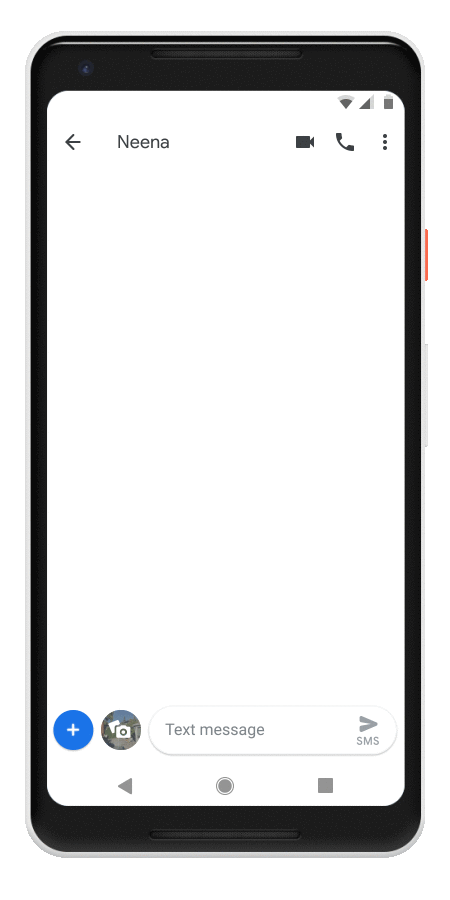
In Messages, the Assistant will automatically pop up suggestion chips when you are having conversations with somebody about movies, restaurants and the weather. That’s a pretty limited feature set for now, though Google tells us that it plans to expand it over time.
What’s important here is that the suggestions are generated on your phone (and that may be why the machine learning model is limited, too, since it has to run locally). Google is clearly aware that people don’t want the company to get any information about their private text chats. Once you tap on one of the Assistant suggestions, though, Google obviously knows that you were talking about a specific topic, even though the content of the conversation itself is never sent to Google’s servers. The person you are chatting with will only see the additional information when you push it to them.
Powered by WPeMatico
Google Assistant gets expanded language and device support
At MWC Barcelona, Google today made a few announcements around its Assistant. A lot of these center around support for KaiOS, the operating system for low-end feature phones that Google invested in last year, and additional language support.
While KaiOS, which was born out of Mozilla’s failed FirefoxOS project, may be for the very low end of low-end phones, Google argues that it’s exactly these devices that can profit from have access to a voice-driven assistant, given that they often have smaller screens, too, that make typing a hassle. Google is now bringing the Assistant to these KaiOS devices for users in India, Indonesia, Mexico and Brazil. In addition, it’s also bringing Voice Typing to KaiOS to help user enter text using their voice. With this, KaiOS users can simply speak their queries and use the Assistant as a way to input all kinds of information.

“If you look at the emerging markets, we’ve seen that the number of Assistant users has multiplied by seven,” Google’s Behshad Behzadi said. “The main reason for this is that for the new users which are coming to this technology for the first time, voice is really the easiest and most natural way for them to use their phones. It’s removing a technology barrier for these users.”
With today’s launch, Google is also bringing support for its bilingual Assistant to more languages. This allows you to seamlessly switch between two languages. Until now, this only worked for English, Spanish, German, French, Japanese and Italian. Today, the company is adding Korean, Hindi, Swedish, Norwegian, Danish and Dutch to this lineup.
In addition, the Assistant now speaks eight new Indic languages: Marathi, Bengali, Tamil, Telugu, Gujarati, Kannada, Malayalam and Urdu.
Besides the new languages, Google is also bringing Actions — Google’s version of what Amazon calls skills in the Alex ecosystem — to Android Go and KaiOS. Developers can build these actions in 19 languages across 29 locales now.
Google also quietly launched a few other new Assistant features today. You can now check in to your Lufthansa, Swiss or Austrian Air flights within Europe using your voice, for example. The Assistant on your phone can now also control the Digital Wellbeing settings like your wind-down time and ‘do not disturb’ mode (in English, German and French). And if you speak German or French, then multiple actions — which allow you to tell the Assistant to perform more than one action at a time (“What’s the weather like in Munich and Bordeaux?”) — are now available to you, too. Until now, this feature was only available in English.
Powered by WPeMatico
LG’s latest flagship uses your hand veins to unlock
We’ve already known about the G8 ThinQ for some months now. And a few weeks back, LG made the whole camera rig official, announcing that the handset would be getting a ToF image sensor on its front-facing camera, bring, among other things, advanced face unlock technology.
The company did manage to save a few tricks for the product announcement, including a strange little biometric addition. LG says the phone’s Hand ID tech is the first to use “advanced palm vein authentication” — which could well be accurate. Certainly it’s not a mainstream feature yet.
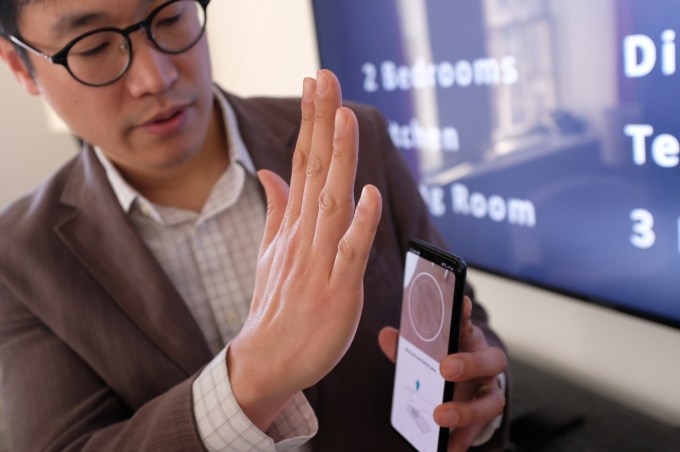
And I’ll give it to LG, Hand ID is a much catchier name than “palm vein unlock,” which is one of the creepier sounding smartphone features in recent memories. Still, the underlying technology is actually pretty cool here, once you’re down shuddering from how weird the whole thing is on the face of it.
From the company’s press materials, “LG’s Hand ID identifies owners by recognizing the shape, thickness and other individual characteristics of the veins in the palms of their hands.” It turns out, like faces and fingerprints, everyone’s got a unique set of hand veins, so once registered, you can just however your hot blue blood tubes over the handset to quickly unlock in a few seconds.
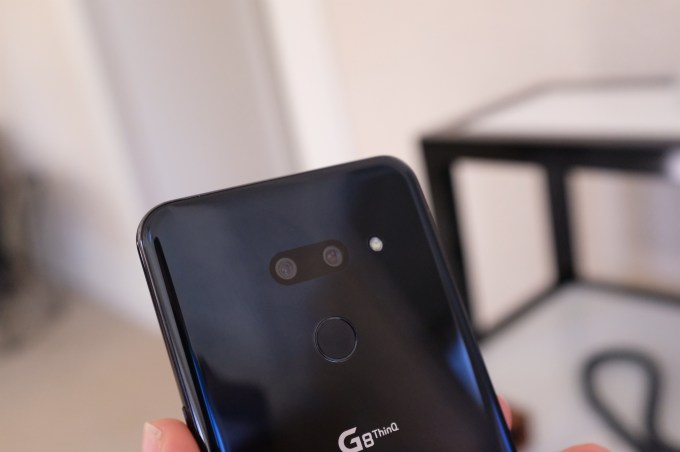
The Z camera also does depth-sensing face unlock that’s a lot harder to spoof than the kind found on other Android handsets. LG’s also put the tech to use for a set of Air Motion gestures, which allow for hands-free interaction with various apps like the camera (selfies) and music (volume control).
I played around with the feature, and if I’m being totally honest, it takes some getting used to. You’ve got to train yourself to get things just right, which could well dissuade most users from any sort of long-term adoption of features that can pretty quickly with accomplished with a tap.
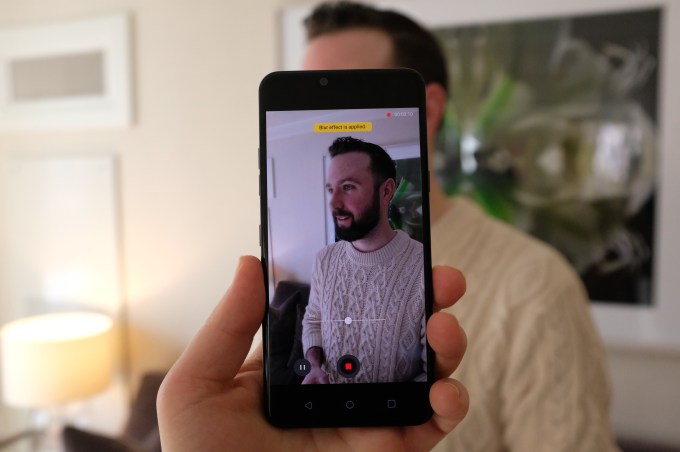
Other notable features for the new flagship include a 6.1 QHD+ OLED display and a new video portrait mode, which lets users adjust bokeh on the fly.
The handset will hit the States “in the coming weeks.” Pricing is still TBD, but I anticipate that it will cost around the same a previous LG flagships.
Powered by WPeMatico
Unreal Engine 4 support is coming to HoloLens 2
Microsoft closed out today’s big HoloLens 2 debut with a surprise appearance by Epic Games CEO, Tim Sweeney. The gaming exec was clearly impressed by the technology’s future for both developement and consumer augmented reality.
“I believe that AR is going to be the primary platform of the future for both work and entertainment,” he told the crowd at the event.
The Fortnite creator is kicking things off on the development side, announcing that Unreal Engine 4 support will be coming to the headset. The move is part of a larger strategy for Microsoft to open the system up, as it looks to grow its key foray into the world of mixed reality.
For Epic, meanwhile, it’s part of a larger embrace of both Microsoft’s solution and all things AR. Sweeney noted that the company is not ready to announce any kind of consumer-facing AR offering, that they’re certainly on the way, and the company “will support HoloLens in all of our endeavors.”
Powered by WPeMatico
Microsoft announces an Azure-powered Kinect camera for enterprise
Today’s Mobile World Congress kickoff event was all about the next Hololens, but Microsoft still had some surprises up its sleeve. One of the more interesting additions is the Azure Kinect, a new enterprise camera system that leverages the company’s perennially 3D imaging technology to create a 3D camera for enterprises.
The device is actually a kind of companion hardware piece for Hololens in the enterprise, giving business a way to capture depth sensing and leverage its Azure solutions to collect that data.
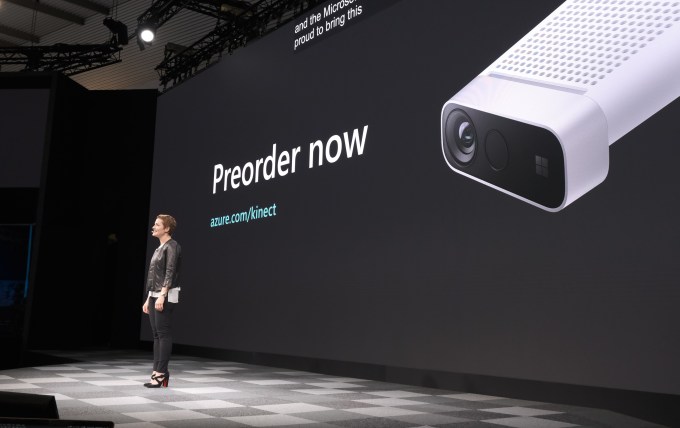
“Azure Kinect is an intelligent edge device that doesn’t just see and hear but understands the people, the environment, the objects and their actions,” Azure VP Julia White said at the kick off of today’s event. “The level of accuracy you can achieve is unprecedented.”
What started as a gesture-based gaming peripheral for the Xbox 360 has since grown to be an incredibly useful tool across a variety of different fields, so it tracks that the company would seek to develop a product for business. And unlike some of the more far off Hololens applications, the Azure Kinect is the sort of product that could be instantly useful, right off the the shelf.
A number of enterprise partners have already begun testing the technology, including Datamesh, Ocuvera and Ava, representing an interesting cross-section of companies. The system goes up for pre-order today, priced at $399.
Powered by WPeMatico
Say hello to Microsoft’s new $3,500 HoloLens with twice the field of view
Microsoft unveiled the latest version of its HoloLens ‘mixed reality’ headset at MWC Barcelona today. The new HoloLens 2 features a significantly larger field of view, higher resolution and a device that’s more comfortable to wear. Indeed, Microsoft says the device is three times as comfortable to wear (though it’s unclear how Microsoft measured this).
Later this year, HoloLens 2 will be available in the United States, Japan, China, Germany, Canada, United Kingdom, Ireland, France, Australia and New Zealand for $3,500.
One of the knocks against the original HoloLens was its limited field of view. When whatever you wanted to look at was small and straight ahead of you, the effect was striking. But when you moved your head a little bit or looked at a larger object, it suddenly felt like you were looking through a stamp-sized screen. HoloLens 2 features a field of view that’s twice as large as the original.
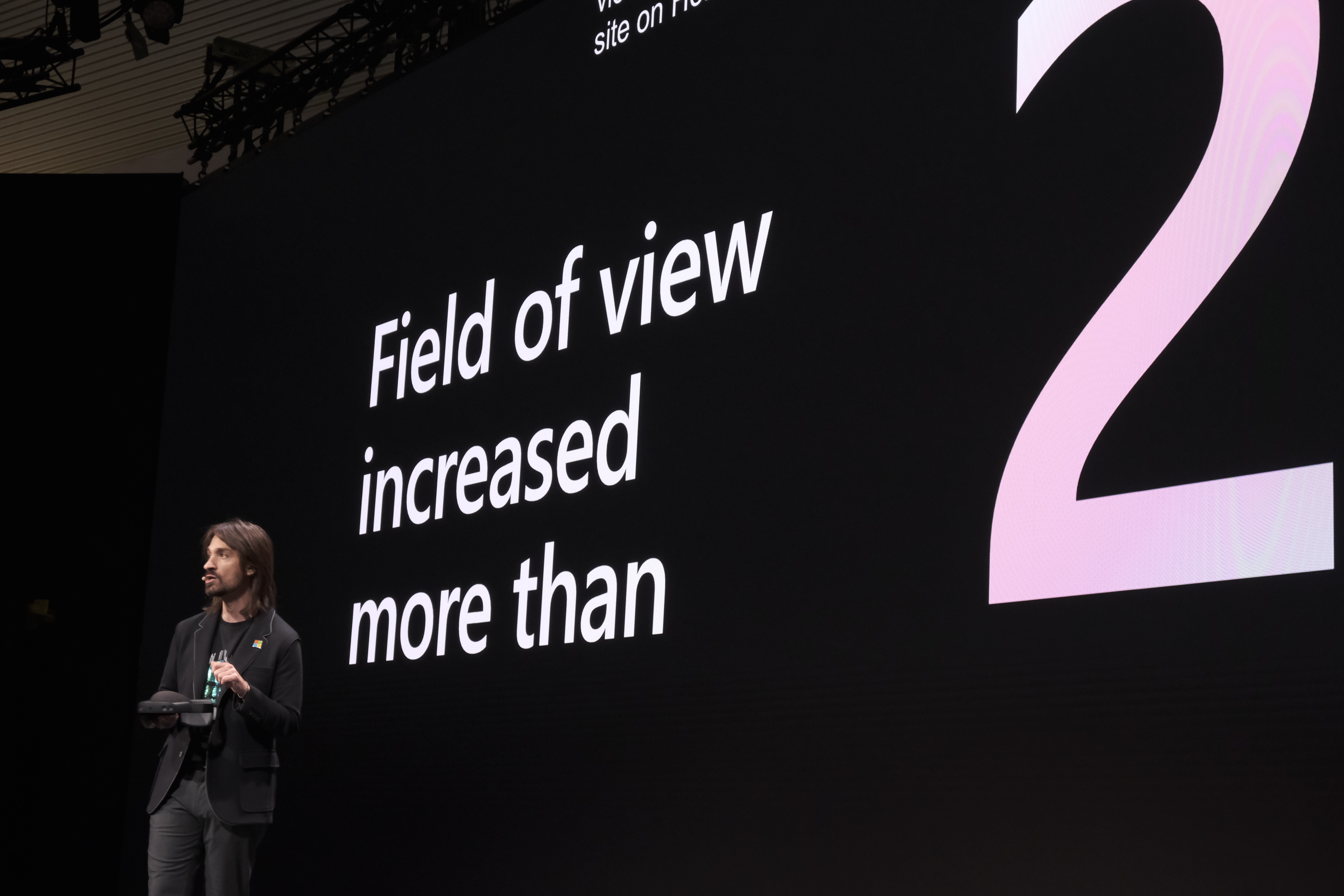
“Kinect was the first intelligent device to enter our homes,” HoloLens chief Alex Kipman said in today’s keynote, looking back the the device’s history. “It drove us to create Microsoft HoloLens. […] Over the last few years, individual developers, large enterprises, brand new startup have been dreaming up beautiful things, helpful things.”
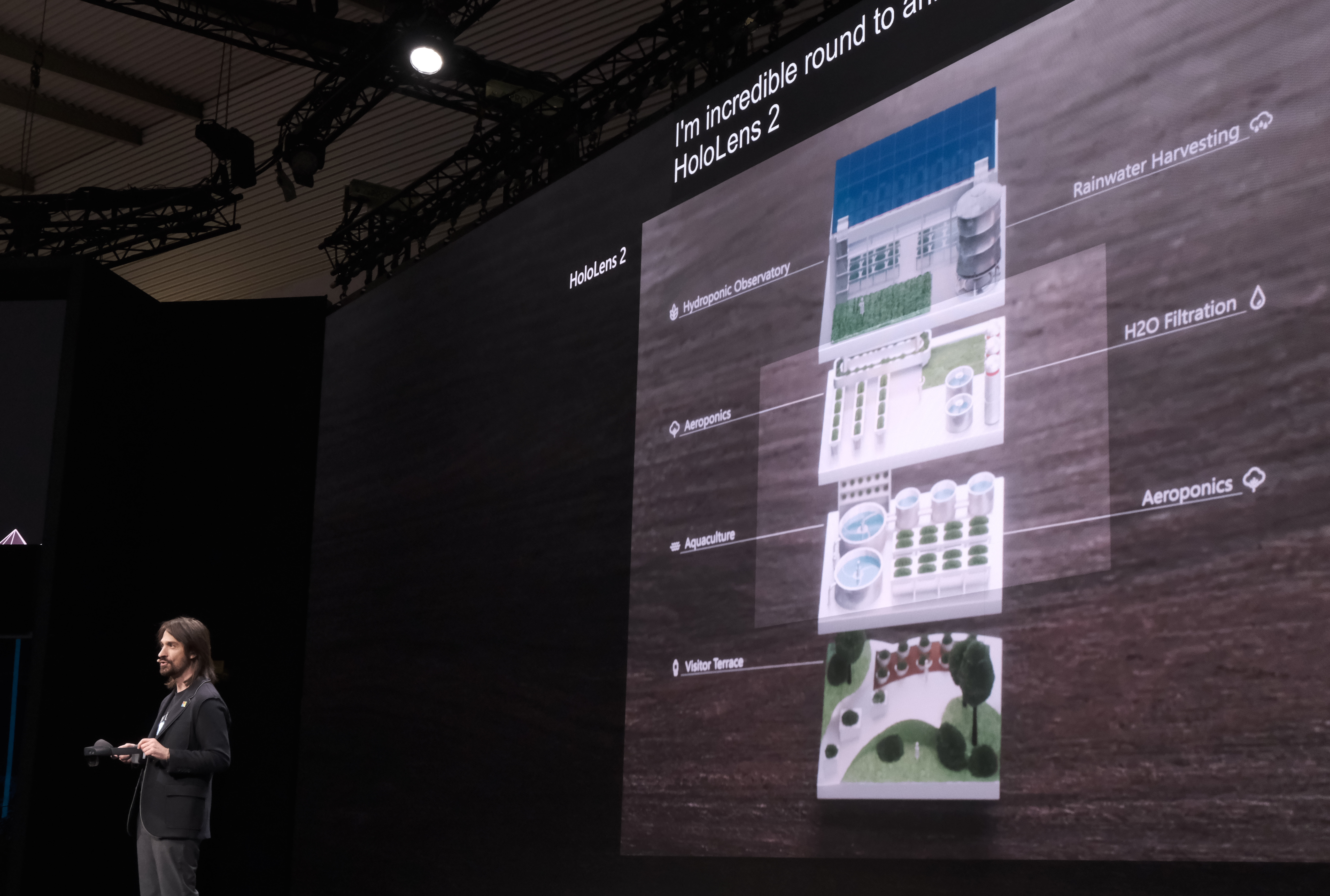
The HoloLens was always just as much about the software as the hardware, though. For HoloLens, Microsoft developed a special version of Windows, together with a new way of interacting with the AR objects through gestures like air tap and bloom. In this new version, the interaction is far more natural and lets you tap objects. The device also tracks your gaze more accurately to allow the software to adjust to where you are looking.

“HoloLens 2 adapts to you,” Kipman stressed. “HoloLens 2 evolves the interaction model by significantly advancing how people engage with holograms.”
In its demos, the company clearly emphasized how much faster and fluid the interaction with HoloLens applications becomes when you can use slides, for example, by simply grabbing the slider and moving it, or by tapping on a button with either a finger or two or with your full hand. Microsoft event built a virtual piano that you can play with ten fingers to show off how well the HoloLens can track movement. The company calls this ‘instinctual interaction.’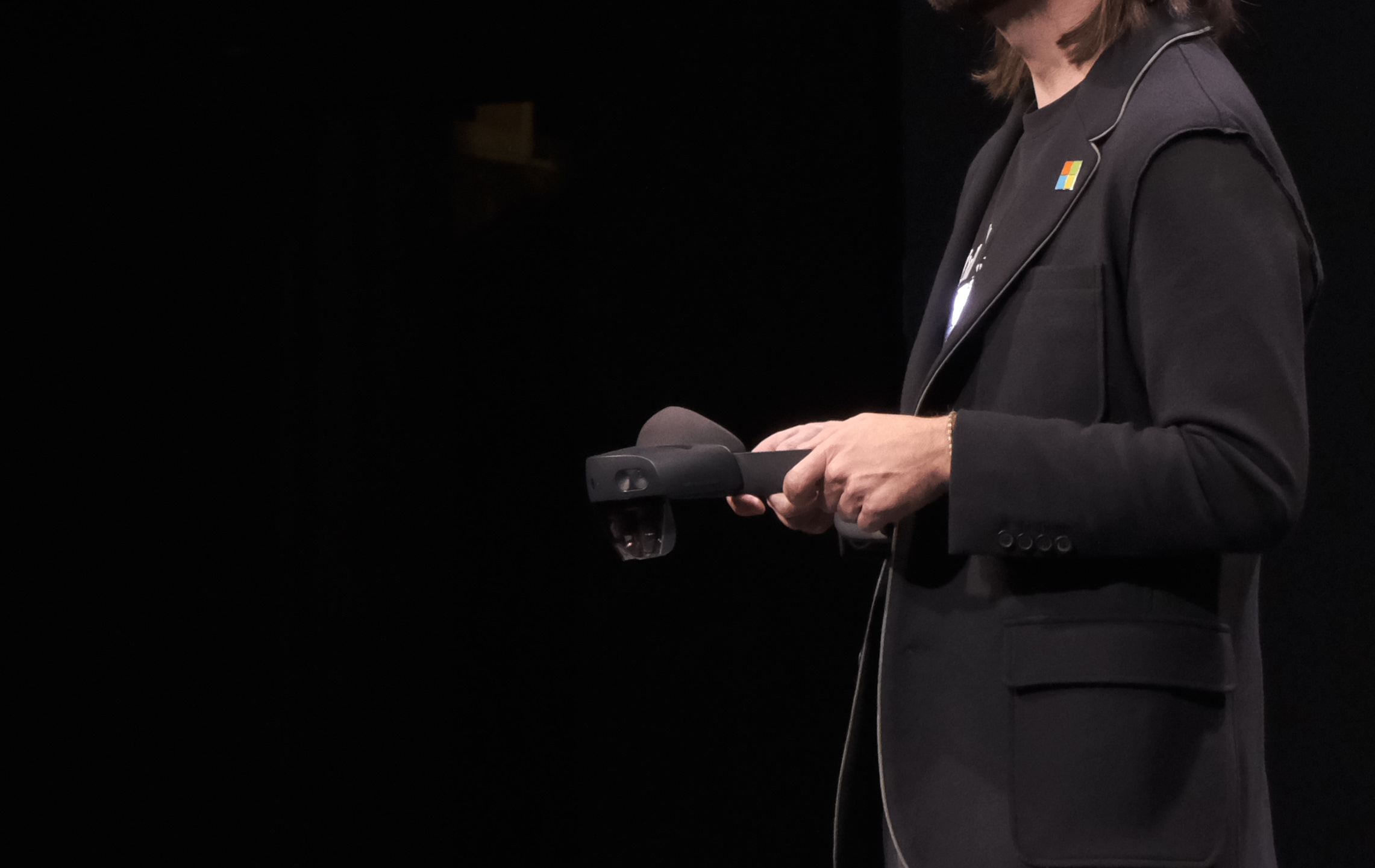
Microsoft first unveiled the HoloLens concept at a surprise event on its Redmond campus back in 2015. After a limited, invite-only release that started days after the end of MWC 2016, the device went on sale to everybody in August 2016. Four years is a long time between hardware releases, but the company clearly wanted to seed the market and give developer a chance to build the first set of HoloLens applications on a stable platform.
To support developers, Microsoft is also launching a number of Azure services for HoloLens today. These include spatial anchors and remote rendering to help developers stream high-polygon content to HoloLens.
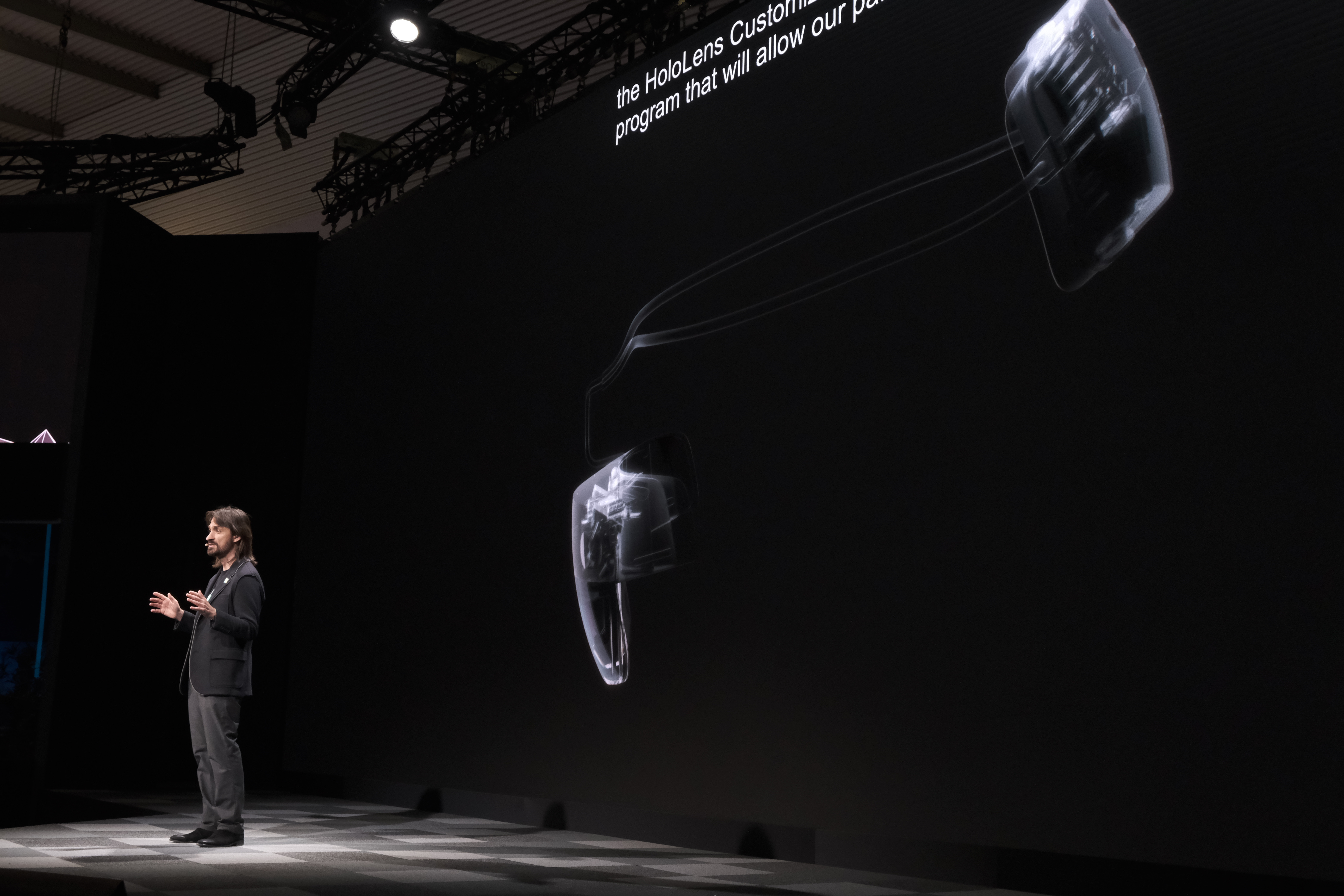
It’s worth noting that Microsoft never positioned the device as consumer hardware. I may have shown off the occasional game, but its focus was always on business applications, with a bit of educational applications thrown in, too. That trend continued today. Microsoft showed off the ability to have multiple people collaborate around a single hologram, for example. That’s not new, of course, but goes to show how Microsoft is positioning this technology.
For these enterprises, Microsoft will also offer the ability to customize the device.
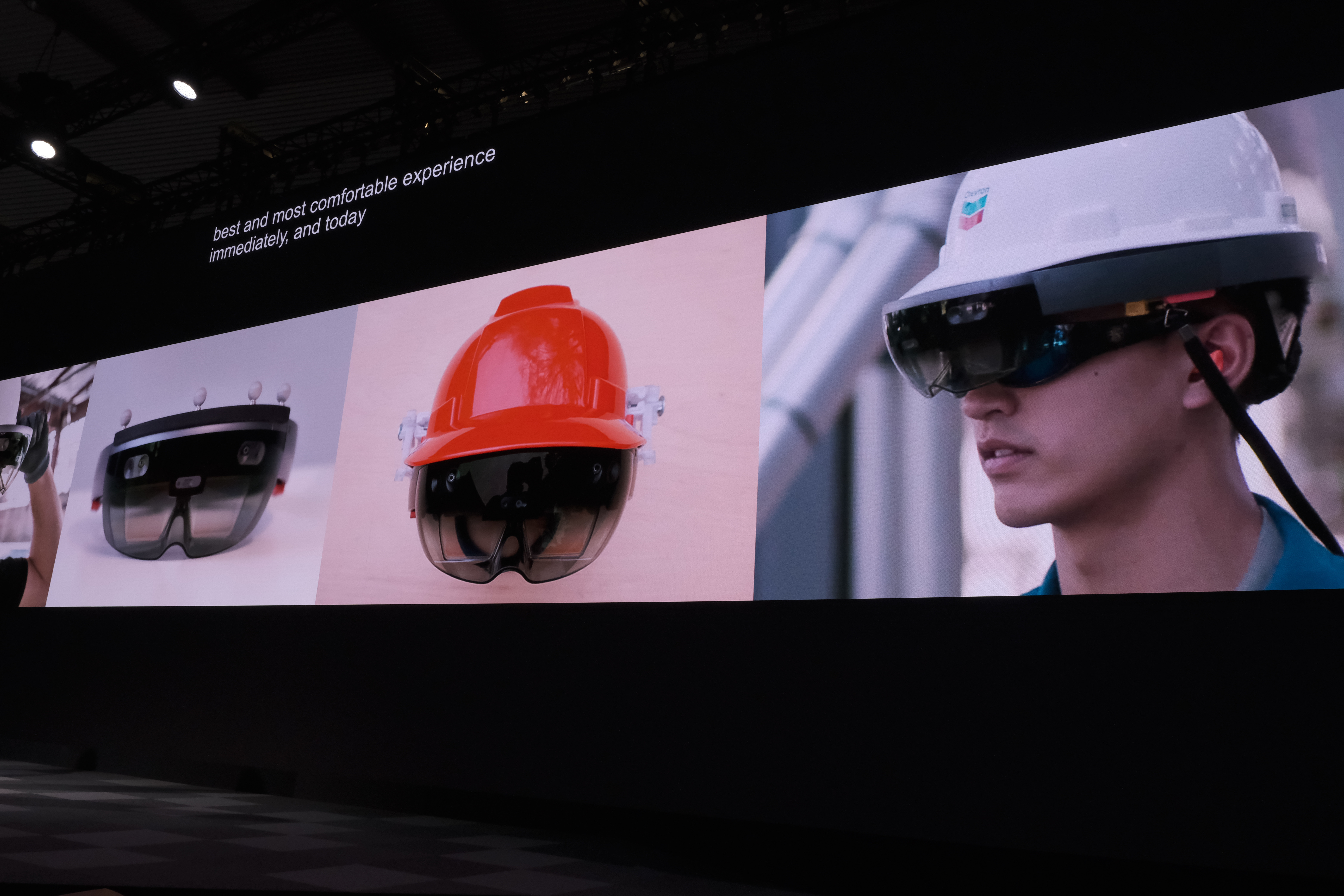
“When you change the way you see the world, you change the world you see,” Microsoft CEO Satya Nadella said, repeating a line from the company’s first HoloLens announcement four years ago. He noted that he believes that connecting the physical world with the virtual world will transform the way we will work.
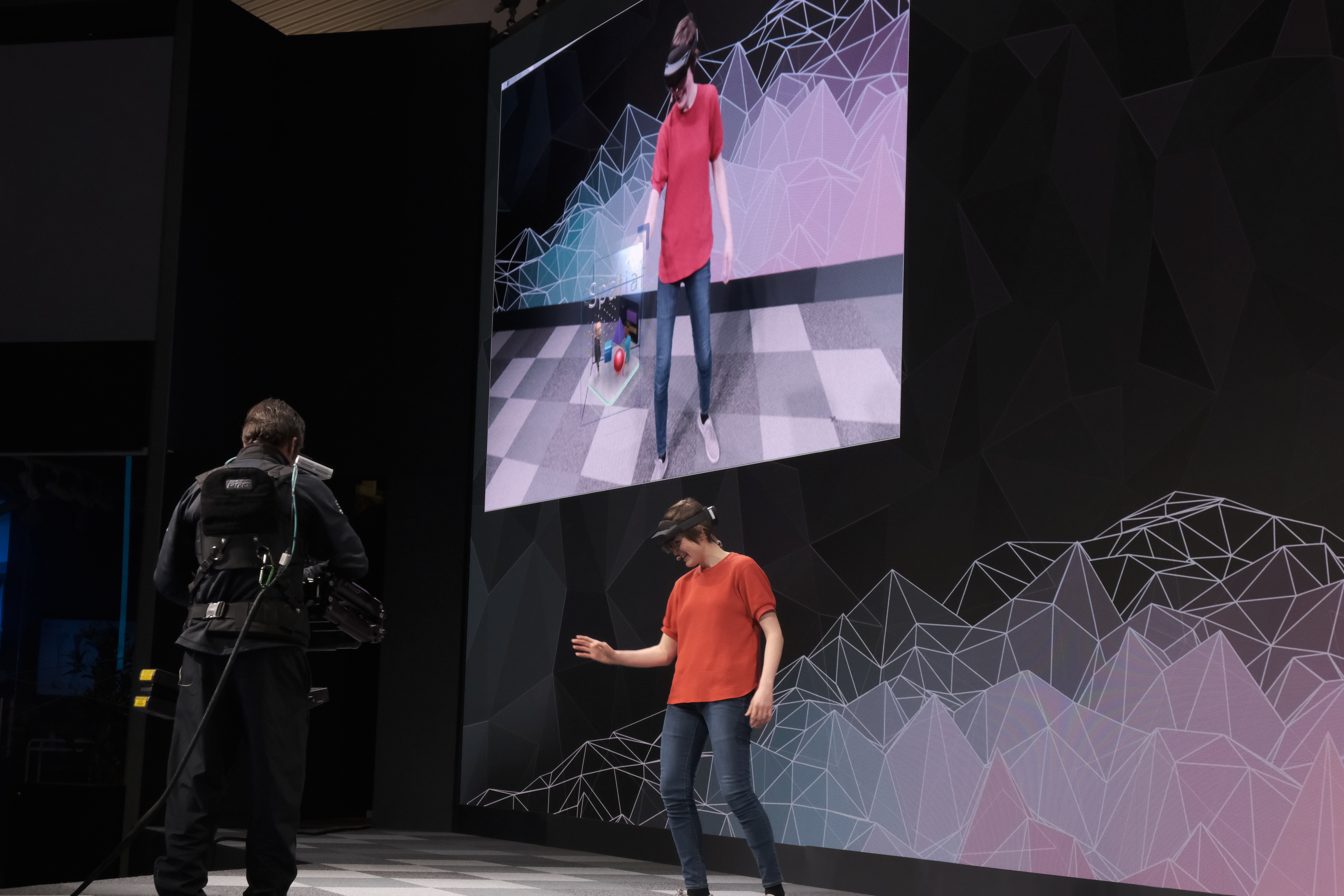
Powered by WPeMatico
Watch Microsoft unveil the HoloLens 2 live right here
Microsoft is set to announce a brand new hardware device at MWC in Barcelona — the new HoloLens headset. The conference starts at 6:00 PM CET (5:00 AM GMT, 12:00 PM ET, 9:00 AM PT).
If you’ve ever tried the HoloLens, you know that this it is a magical device. But Microsoft quickly realized that it had more potential for industrial use cases. It is now positioned as a B2B device.
Let’s see what Microsoft has in mind with the second-generation HoloLens. The company is also going to talk about its mobile strategy when it comes to apps and services on iOS and Android.
You can check it out live via Microsoft’s official stream above, and stay tuned on TechCrunch.com for ongoing coverage of all the news coming out of MWC.
Powered by WPeMatico
Need cameras? The Nokia 9 PureView has lots
You want camera? The Nokia 9 PureView has them — more than you could ever possibly need, really. The latest premium device from HMD sports a five camera hexagonal array, along with the flash and color sensors. The two front-facing cameras, meanwhile, bring the total up to seven.
Overkill? Yeah, probably. But the device certainly maintains the Nokia brand’s legacy of pushing mobile imaging to its limits. What’s most interesting here, is how it all works. Rather than, say, switching between different focal points, the device takes shots on all five at once, fusing them together into one big picture.
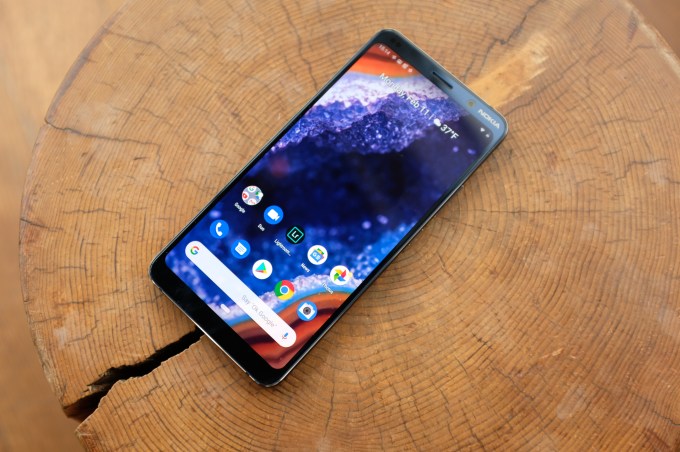
Working in tandem, the cameras capture more than 60-megapixels worth of data. The system builds on the expertise of Light (the name of the even more silly nine-camera array) and Qualcomm to process the information into one complex photo that allows for tremendous editing leeway and deep depth maps. Users can shoot in RAW format and edit those images with the mobile version of Lightroom, made available through a partnership with Adobe.
The phone’s design is nice — certainly one of the newly reborn Nokia brand’s nicer to date. Though the rest of the aspects are fairly middling, including a 5.99 inch POLED display and a Snapdragon 845 chipset.
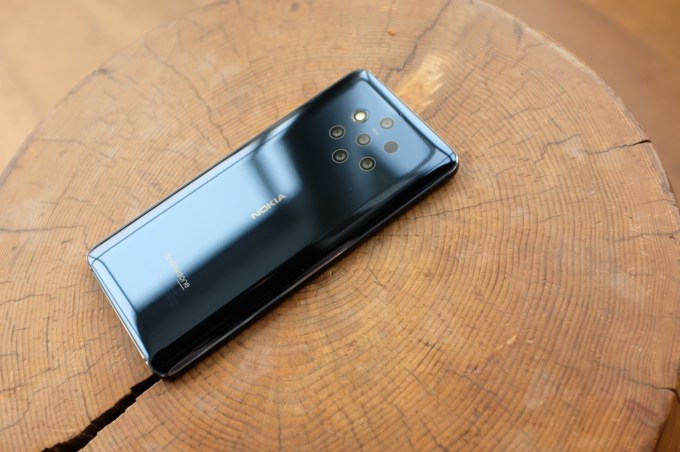
The price is right. At $699, it’s a decent mid-range phone with a heck of a gimmick. HMD, however, seems to be keenly aware that this one will have a relatively niche appeal. The company says it’s a limited edition device with a “defined production run.” No word what that means in terms of numbers, and it seems pretty reasonable to expect HMD to make this manner of device more widely available should it sell.
No word on timing, but HMD says we should expect the product to be available in the States.
Powered by WPeMatico
HMD keeps feature phones and Snake alive with the Nokia 210
HMD was something of an instant success when it launched at Mobile World Congress two years back. That rapid rise owed to a few key things: price, familiar branding and its predecessor’s long time commitment to the feature phone.
Those who’ve been following the industry for some time will recall that the original Nokia mobile wasn’t particularly quick to adopt the smartphone lifestyle, but the company maintained marketshare by catering to the low end of the market. HMD has continued to embrace the category by re-releasing some familiar designs and creating altogether new non-smart phones.
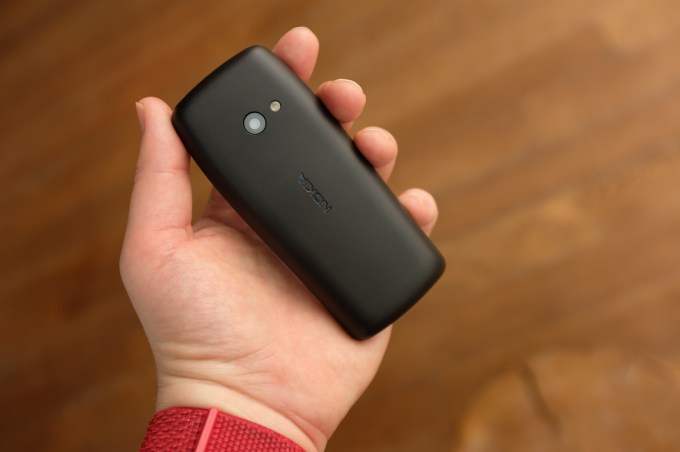
While it shares a number with the QWERTY-sporting Asha, the Nokia 210 is more burner than BlackBerry. The Palm-sized handset sports a small screen, surrounded by thick casing and some big buttons. The handset can access the internet via Opera mini, so users can do some light social network.
And yes, it runs Snake.
HMD promises an impressive month of battery life, packed into a handset that should run around €30 ($34).
Powered by WPeMatico
